The talk of the gaming town these days is the launch of the Nintendo Switch 2. While we here at The Punished Backlog could not be more excited about a new Nintendo console, we also figured now is the right time to pay tribute to its predecessor!
The first Switch, one of the most successful and versatile consoles ever made, has played a significant role in the lives of this very site’s writers over the past eight years. The platform often hosted the games that have inspired our writing, not just because of its top-tier first-party content, but also because of the tons of incredible indies and solid third-party ports that graced the hardware.
Moreover, the hybrid nature of the console absolutely enhanced the whole experience. I could play Super Smash Bros. Ultimate or Mario Kart 8 Deluxe at home or on the train. The Switch was the first place I tried open-world games like The Elder Scrolls V: Skyrim and Assassin’s Creed IV: Black Flag, which had previously been only on PC or home consoles. And some of the best indie experiences of the last decade felt perfect on the console, with Balatro, Celeste, Sea of Stars, and countless other titles feeling like they were made to be portable experiences first and foremost.
I would hesitate to call the Switch the best Nintendo console ever made, though it is, without a doubt, the most complete Nintendo system out there. Over the past eight years, I have felt at various times as though I could plausibly play just about anything on Switch, big and small, new and old, popular and esoteric. To some extent, I did, and judging by this list, I know I wasn’t alone.
– Written by Sam Martinelli
Our 23 Top Nintendo Switch Games of All Time
From 3D platformers to indie survival games, RPGs to party titles, here are 23 of the best Nintendo Switch games ever made in alphabetical order. Plus, we had so many games we loved on the Switch and only so much space to write about them, so we’ve included a long list of honorable mentions at the end.
Want to jump to a specific entry? Use our table of contents:
- Animal Crossing: New Horizons
- Balatro
- The Banner Saga Trilogy
- Battle Chef Brigade
- Celeste
- Fire Emblem: Three Houses
- The Flame in the Flood
- Hollow Knight
- Kirby and the Forgotten Land
- The Legend of Zelda: Breath of the Wild
- The Legend of Zelda: Tears of the Kingdom
- Luigi’s Mansion 3
- Mario Kart 8 Deluxe
- Metroid Dread
- New Pokémon Snap
- PowerWash Simulator
- Sayonara Wild Hearts
- Slay the Spire
- Stardew Valley
- Suika Game
- Super Mario Odyssey
- Super Smash Bros. Ultimate
- Untitled Goose Game
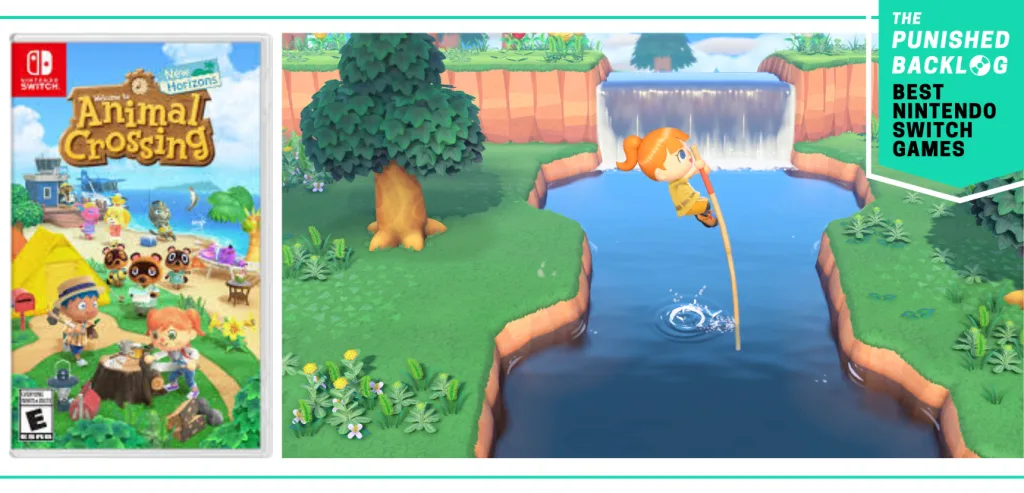
Animal Crossing: New Horizons
Just another escapist game released in March of 2020. Nothing to see here. Move along.
Seriously: Has there ever been a more perfectly, and I mean PERFECTLY, timed release than Animal Crossing: New Horizons? This is a game that let you build a home, perform day-to-day tasks, and mingle with your friends, and it dropped the second the world went into lockdown over COVID-19. You just can’t make that up. And man, did it come out when the world needed it to.
New Horizons will forever hold a personal spot in my heart for this exact reason. When the planet felt like it had ground to a halt, when we could no longer see our friends, when many of us were struggling to find work, we found a new world to build, explore, and, honestly, to live in through all the chaos. The activities felt endless: Watching my island grow in front of my eyes into a full blown town; destroying and rebuilding it over and over again until I was satisfied with a perfect layout; hunting down various bugs, fish, and more to fill out the museum, chasing villagers to move to my island, or, more often than not, bullying them into leaving (looking at you, Tammi); and, of course, paying off my predatory loan from Tom Nook, all made me feel like there was still a world out there waiting to be discovered (or, again, in Tom Nook’s case, paid off).
Add in the ability to visit and trade with friends on their islands — yes, we can all finally admit to insider trading on turnips — and Nintendo delivered one of the defining games of the year. I honestly don’t know how I would have passed along the early days of lockdown without it. It’s not the greatest game to ever grace the Switch, but it sure is one of the most important, and it gave a whole new meaning to the phrase “social distancing” for a brief moment.
– Written by Mark Bowers
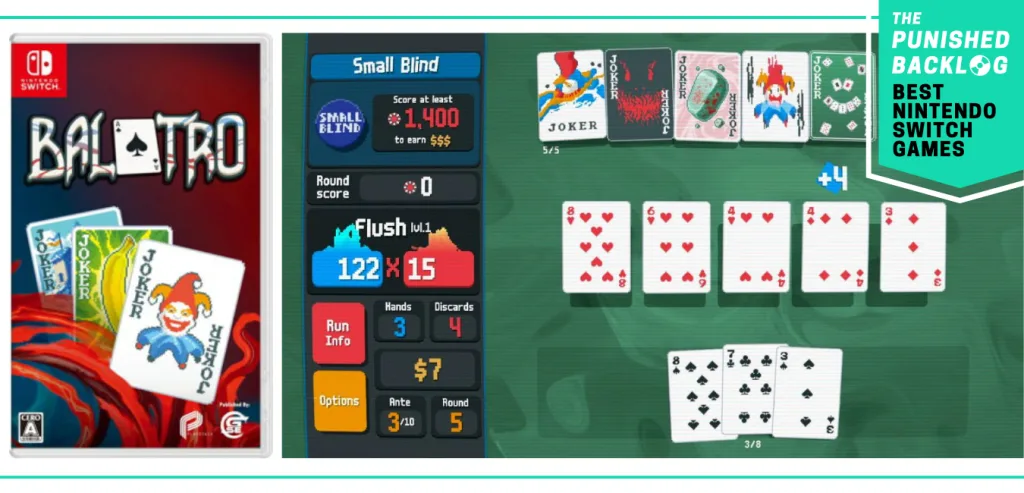
Balatro
As the resident Balatro stan here at The Punished Backlog, I could not let it slip from this list. Balatro was 2024’s indie darling, made by solo Canadian developer LocalThunk. It’s had massive success since its launch, especially on Nintendo Switch, arguably one of the best platforms on which to play this masterpiece.
Balatro is a roguelike deckbuilding game with a poker twist. In it, you play illegal poker hands from different decks with the help of tarot cards, Jokers, vouchers, and planet cards. These tools act as power-ups to help you navigate each increasingly difficult blind. Thankfully, you don’t need to be a poker expert to play, as it’s beginner-friendly and accessible to a wide audience.
There are 150 Jokers to unlock, each offering vastly different boosts. These boosts may give you more points for spade cards, or multiply your score if you play a three of a kind. Each run will look different as you’ll find different supplies in the shop with every play. The game feels virtually endless, and there’s so much to unlock. At the time of this writing, I’ve played 230 hours of Balatro and have only completed 34% of the game. It’s the perfect time sink if you’re looking for a challenge to make you cheer, laugh, or cry.
Balatro can be incredibly challenging, yet it’s always rewarding. There are even times it’ll piss you off. The number of times I hit the wrong button and failed a strong run is frustrating. Yet, it’s still one of my favorite games; it’s lovingly chaotic and knows how to suck you in. It’s the perfect Switch game to play on the go (you can also play on mobile, but if you’re an addict, that may not be wise). If you love card games of any kind, Balatro is one to check out!
– Written by Allison McDaniel
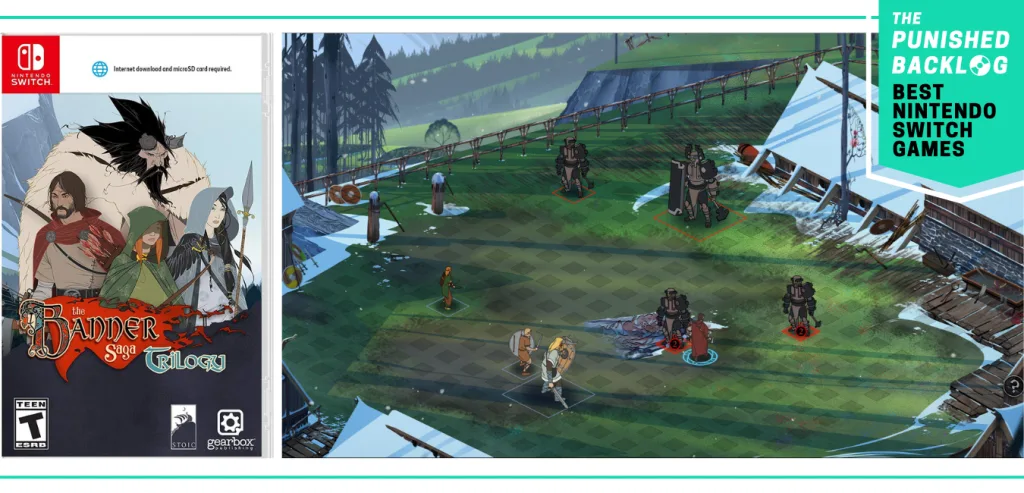
The Banner Saga Trilogy
I can still remember playing The Banner Saga at a tiny kitchen table on my laptop in New Orleans, hunched over the keyboard, not noticing that the sun had set. This incredible indie Nordic adventure of Vikings and giants was the first game that ever made me appreciate (much less enjoy) turn-based combat, and that’s not even the best thing about that.
With well-written characters and divinely devastating interweaving plotlines across three games, the Banner Saga Trilogy is, in my opinion, a masterclass in game design. Players take on the role of a leader of a small village who is mobilizing townspeople behind their banner on a desperate immigration as a strange, otherworldly darkness takes over the lands. As your caravan moves, you’ll recruit proud horned warriors called Varls, scared families ready to be inspired, and clever centaurs seeking peace. More people behind your banner means a stronger military and political presence, but it also means the need for more food, which is desperately difficult to come by.
While a good portion of this tactical role-playing series is resource management and sharp storytelling, the majority of the gameplay is rooted in difficult battles. Each character has a unique skill tree and leveling system that can make them powerhouses in totally different ways. Deciding on who to send out, and when, can make all the difference in the trilogy’s grueling and satisfying combat encounters.
Choices matter on and off the battlefield. These riveting titles build on each other, leading to an inspiring, massive adventure that will stay with you for years to come.
Banner Saga was made by Stoic (a team of former BioWare developers) and published by the sadly now defunct Versus Evil. The Banner Saga games are available on PC, Mac, PlayStation 4, Xbox One, iOS, Android, and the Nintendo Switch, and it’s on that last platform where I think it absolutely shines. You can get all three epic games in one collection for the Switch for $25. Join me and follow the banner.
– Written by Amanda Tien
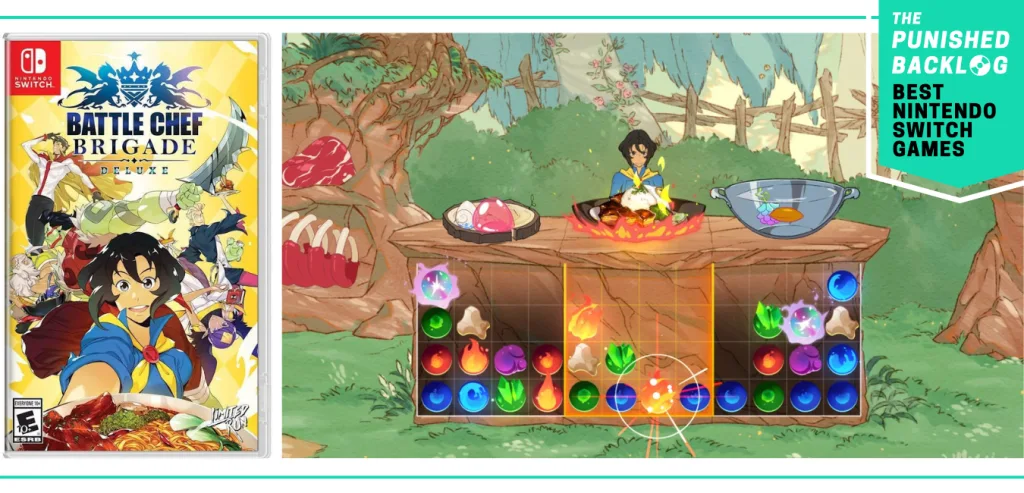
Battle Chef Brigade
Throughout my life, I’ve gone through spurts of watching cooking competition shows with my family and, later, my partner. Chopped, Iron Chef and Iron Chef America, the Next Food Network Star, and most recently, Culinary Class Wars. These programs have always inspired me. It seemed like the ultimate challenge: a limited amount of time, a compressed physical space, a panel of experts to impress, a surprise ingredient to highlight, and it must be delicious. However, this excitement always stayed decidedly far from reach… until Battle Chef Brigade.
Battle Chef Brigade was one of the first games that made me want a Nintendo Switch, a platform I had previously decided was too expensive and unnecessary for my type of gaming. A crowdfunded title by Trinket Studios, this 2017 indie was originally launched just on Switch and PC, neither of which I had at the time. Its quick action, colorful art, and culinary premise had me hooked from the cover art alone.
Players take on the role of an aspiring cooking warrior, Mina, who is protecting the land by hunting cursed fantastical beasts and turning them into delicious, nutrient-giving meals during a massive competition (the plot makes more sense when you play it). Mina can learn different skills and acquire unique cooking tools to help her be the best in the biz. And yes, there’s always a secret ingredient in the challenge!
The gameplay is clever. A cooking battle is equal parts action (zooming around a map area, cutting tomatoes off of vines, hunting little one-eyed chicken monsters) and cooking (accomplished via Candy Crush-like puzzles). At the end of your challenge, beautiful artwork appears on the screen, showcasing a made-up dish for whatever you’ve concocted. The heartfelt story and anime-esque art are great, driving you ever forward to culinary greatness.
I replay Battle Chef Brigade often, and I always hope more people will give this a shot so we can get more excellence from Trinket Studios.
– Written by Amanda Tien
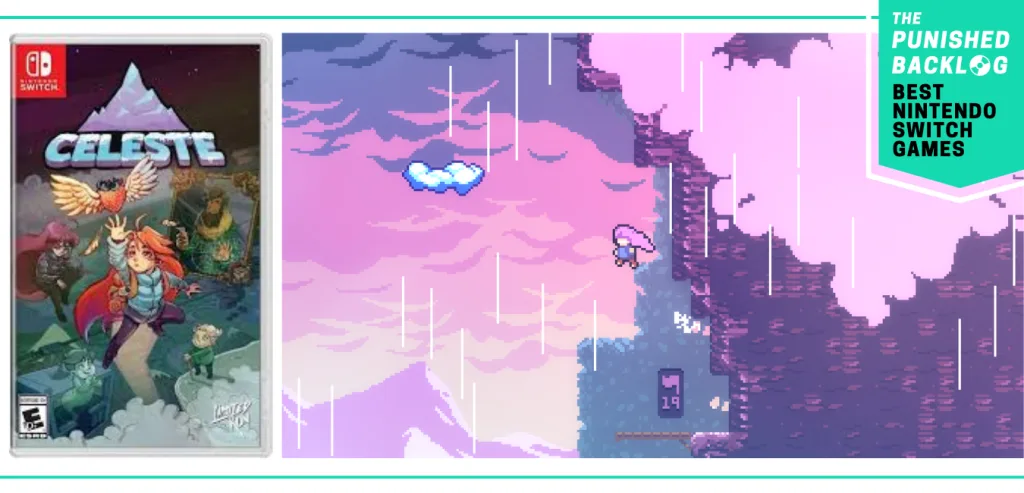
Celeste
I’m not sure there’s much more I can really say about Celeste at this point. It’s one of the best games (not just indies) of the past decade. It’s a super-sharp 2D game with some of the toughest yet most awe-inspiring platforming challenges ever made. The writing is phenomenal and got me choked up many times, and the soundtrack perfectly accentuates every moment of calmness and anxiety alike. Celeste is truly the perfect marriage of an affecting story and engaging, rewarding gameplay, and little else in the genre has reached the same overall heights.
As this is a list of the best Nintendo Switch games, however, let me also explain why it’s such a perfect game for the hybrid console. Instead of beating short, individual levels a la Mario or Kirby, Celeste’s playable stages are long, sometimes arduous climbs broken up into dozens of brief mini-levels and side challenges. The brevity of each hazardous scenario lends itself perfectly to on-the-go play, and the hours and hours of post-game bonus content make Celeste an ideal experience for trips as short as a daily commute and long as a cross-country flight. Sure, you could easily play it on an expensive gaming PC or a more powerful home console, but the game feels just right on a handheld device, almost as if it were made with the Switch particularly in mind.
As a video game, Celeste is damn near perfect. As a Switch game specifically, there’s not much better out there.
– Written by Sam Martinelli
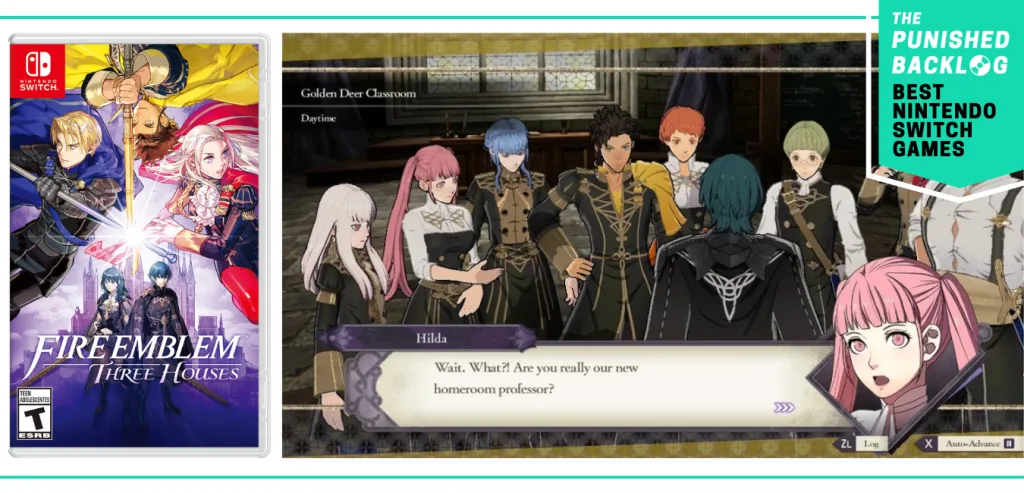
Fire Emblem: Three Houses
This is truly one of the most epic games I’ve ever played, and it is only available on the Nintendo Switch, making it one of the peak titles on this list because of that exclusivity.
This 2019 banger, developed jointly by Intelligent Systems and Koei Tecmo, is a turn-based combat adventure where players take on the role of a new teacher at a prestigious magical boarding military school. The game is split between the cozy vibes of running around the school, hosting tea parties, befriending students and fellow professors, and teaching classes, all the while trying to protect the land from big bad monsters who are inconveniently attacking at the cusp of a civil war.
You lead one of three houses, and your goal is to be the best house at the school. The turn-based combat is some of the most varied I’ve played as you can level up your young warrior and empower them with different expertises. Who you choose to mentor and how you lead has a big impact both at the school and the lands beyond when the war ultimately comes to the school’s gates.
An average playthrough of Fire Emblem: Three Houses takes about 50 hours. However, to experience the full story and befriend everyone you can, you’ll need to play it four times. That’s over 200 hours of content! Replays really do feel like different experiences based on the different students you can meet and get to know, and as you unlock more of this school’s secrets, you’ll be privy to whole new plotlines. There’s drama, dragons, and destiny. What more could you ask for?
The 16th title in the Fire Emblem series is the only one I’ve ever played, and frankly, it might be the only one I ever want to. It’s just that good. If you want more perspectives, check out our Fire Emblem: Three Houses spoilercast from when we played it as a site-wide challenge a few years ago.
Three Houses is one of four Switch-exclusive Fire Emblem games. Who knows what the Switch 2 will bring for the series? Well, Nintendo… I guess they know.
– Written by Amanda Tien
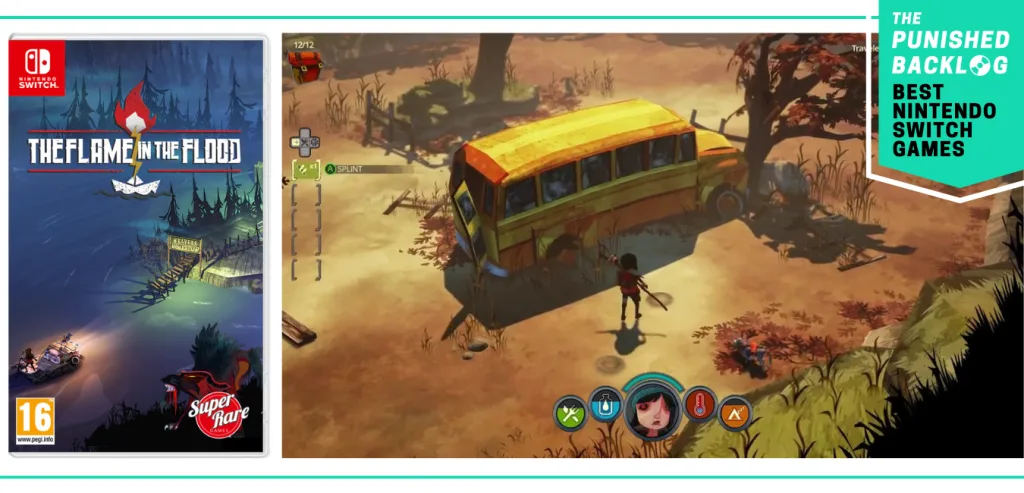
The Flame in the Flood
Each game I’ve featured on this list is something I’ve replayed at least once, and there’s no game I’ve replayed more on the Nintendo Switch than The Flame in the Flood.
Set in the deep American South during an apocalyptic flood, players take on the role of Scout, a quiet young woman who is trying to make it to a rally point with only a dog and a staticky radio for company. Scout must exercise wilderness survival skills, crafting traps, poultices, and a rickety sleeping set-up on her raft as she travels down the ever-widening Mississippi River. There are many ways to die, whether by wolves or an infected snake bite or dehydration. It’s a perilous adventure, accompanied all the while by a beautiful folk and blues soundtrack.
Despite all of this, The Flame in the Flood is a deliciously meditative game, propelled forward by a quiet but urgent story. Peace and fear are equal partners. Each run is a bit different, depending on what locations (elements of which are procedurally generated and randomized) you are able to stop at. Navigating the river is tricky, and not all locations are what they seem. Scout may or may not meet other survivors, acquire the right tools, get what she needs to build a warmer coat in time for the rains. And yet, she persists. The game gives me the sort of unearned confidence that makes me believe I’d be able to do the same in her shoes.
The Flame in the Flood was one of two games developed by indie studio The Molasses Flood before the team was acquired in 2021 by CD Projekt Red to develop a game in the Witcher universe. In April 2025, the studio officially became part of CDPR. While the Boston-based studio may have only been around for about a decade and launched just two titles, the team created a game that has had a lasting impact on me. I think about the ending of The Flame in The Flood often, and it gives me the hope to keep carrying on.
P.S. I’m not the only person who loves this game. Several years ago, VICE published a feature about a 63-year-old man who played the game so much that he broke it. (Inspired by him, the devs fixed his unique bug.)
– Written by Amanda Tien
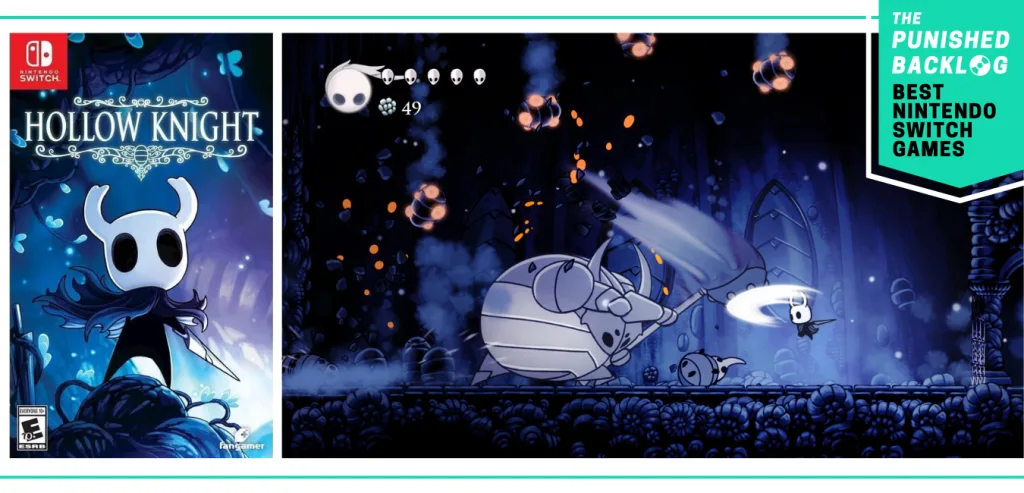
Hollow Knight
Hollow Knight didn’t originate on the Nintendo Switch, but Nintendo’s console sure gave it life. Initially released in 2017 for PC, Hollow Knight was met with quiet but critical acclaim (I distinctly remember Destructoid awarding it a perfect 10). The game looked incredible. And yet, no one beyond a handful of reviewers seemed to be talking about it.
For months, I theorized about when, exactly, Team Cherry’s low-flying Metroidvania game would hit the Switch. Nintendo Directs came and went, with nary a peep (ah, times never change). Then, nearly 18 months after that initial release, Team Cherry did the unthinkable: They stealth-dropped the game on Nintendo hardware, just like that.
And, just like that, I bought the game and booted it up. It’s not hyperbole to say I stayed glued to that screen. Days later, flying to Europe for a gap year in France, I spent nearly all six hours of my flight grinding away at Hollow Knight — exploring harrowing biomes, unlocking new moves, and equipping powerful charms. Not since Breath of the Wild a year earlier had I felt so engrossed in a game.
Many years have passed since I first played Hollow Knight, but that stretch of pure rapture, 40,000 feet in the air, still sticks with me. If Team Cherry can capture even 50% of what made Hollow Knight so special in the upcoming Silksong, we’re in for another memorable time.
– Written by David Silbert
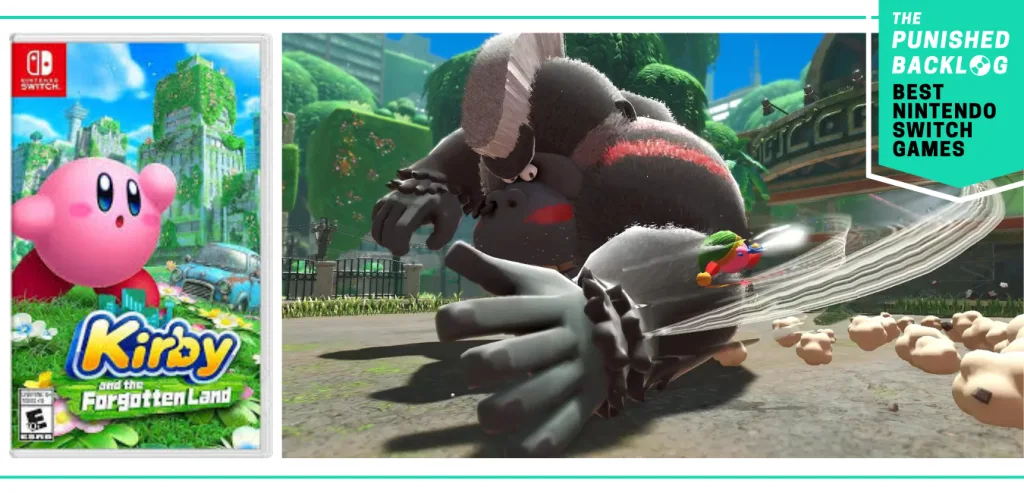
Kirby and the Forgotten Land
Kirby and the Forgotten Land is more than just a great 3D platformer; it fundamentally altered how I felt about Kirby as a video game franchise.
Don’t get me wrong: I’ve always liked the games, but I didn’t really love any of them. Sure, I played the original Kirby’s Dream Land on Game Boy and enjoyed Kirby 64: The Crystal Shards enough to rent it from Blockbuster a bunch of times. But I never viewed the Pink Ball That Eats People as more than a B-tier Nintendo franchise, one that never produced bad games but also didn’t ever achieve true greatness the same way that everyone’s favorite mustachioed plumbers did.
Forgotten Land, however, is simply extraordinary. It perfectly translates the essence of the 2D games into big, sprawling 3D worlds, and the core gameplay loop — while still very basic — has enough variety and depth to justify many playthroughs. Each level comes with bonus objectives, encouraging the player to think outside the box as they travel through each area, and there’s tons of worthwhile side content to unlock in the Waddle Dee Town hub. There’s so much to do in Kirby and the Forgotten Land, from the insane boss rush modes to trying to get the best times in all the Treasure Road challenges, and I never got bored of any of it.
Moreover, playing through the game — the first Kirby title I truly adored — has given me a refreshed appreciation for the franchise as a whole. Whenever I go back and play earlier entries, I see the building blocks of Forgotten Land, from the surprising breadth of attack moves for each copy ability to the labyrinthine nature of some of the levels. I’m not really sure why it took a great 3D game to get me to like a bunch of 2D games more, but I do nonetheless.
Anyone with a Switch and a love of good platformers has got to try out Kirby and the Forgotten Land. More content is coming with the Switch 2 version of the title as well, so my journey with Kirby has yet to conclude. I can’t wait.
– Written by Sam Martinelli
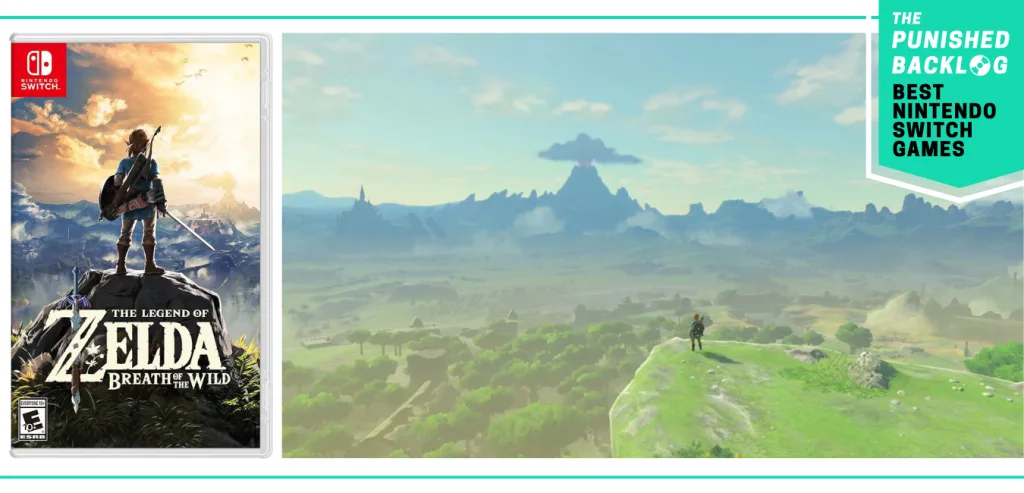
The Legend of Zelda: Breath of the Wild
Breath of the Wild will forever be the hardest game for me to rank within the Zelda pantheon. On the one hand, I adored Nintendo’s deconstruction of the established open-world structure. Everything, from towers in the distance to Korok puzzles tucked in a nearby cranny, evoked a feeling of genuine wonder I’d arguably never felt before in a video game. On the other hand… it meant saying goodbye to the tight, laser-focused Zelda games I’d grown up with.
Regardless of which side of the fence you sit on, there’s no denying the success, importance, or lasting influence of Breath of the Wild. In an era saturated with massive worlds and litanies of icons, being a run-of-the-mill Ubisoft IP no longer cuts it. Today’s players crave tomorrow’s games. They want to lead their own adventure — not follow a dotted line to the next objective.
Breath of the Wild understood that desire and built an entire playground around it. Five years later, Elden Ring did the same. Other games are more blatant in their Breath of the Wild-isms than others (I’m looking at you, Genshin Impact), but the genre shift is nonetheless an exciting one. It remains to be seen whether this style of game will stand the test of time, but at least right now, it’s everything. And we all have Breath of the Wild to thank for it.
– Written by David Silbert
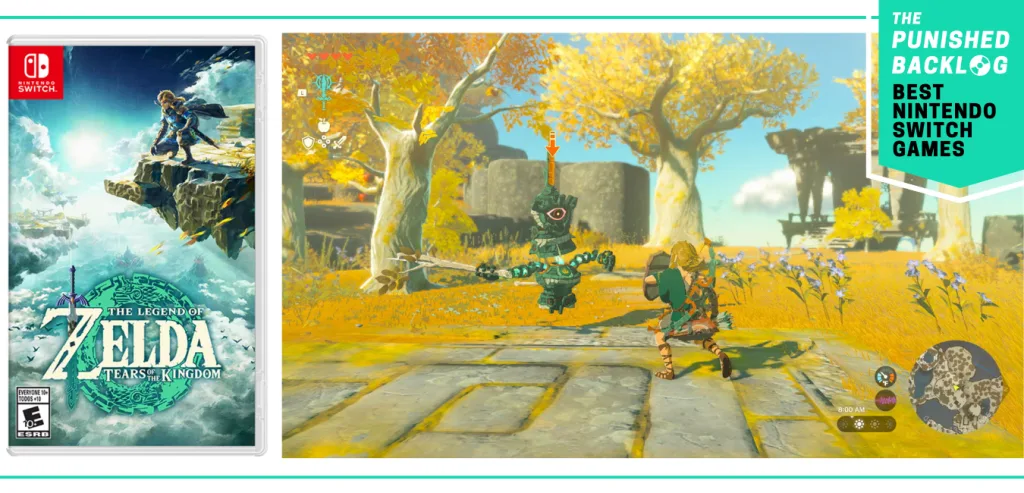
The Legend of Zelda: Tears of the Kingdom
In retrospect, Tears of the Kingdom probably had more pressure surrounding its release than its predecessor Breath of the Wild did. The big gameplay reveal of BotW at E3 2016 (when the game was still presented as a Wii U exclusive) had gamers salivating, and it absolutely lived up to the hype, inspiring mediocre copycats for years and years to follow. TotK, on the other hand, had to build upon a consensus masterpiece, adding just enough new ideas to justify its own existence whilst maintaining enough of what worked in the first place. While I had no doubt Tears would be a success, Breath was one of the toughest possible acts to follow.
For some, Breath of the Wild was such a uniquely impactful experience that nothing in the same vein could ever truly surpass it. After playing Tears of the Kingdom for the first time — scouring through the secrets of its Depths, exploring its caves and valleys, conquering its deadly beasts, soaring through its skybound ruins — I felt as though I was playing through the game I wished Breath of the Wild could have been.
While Breath was a revelation with its massive world, open-ended progression, and immersive gameplay mechanics, Tears expanded upon those ideas and added even more of that gooey Zelda goodness to present the Platonic ideal of what The Legend of Zelda has always tried to achieve. Everything feels perfectly authored yet open to interpretation. The dungeons feel simultaneously classic and new. Link’s new Zonai arm abilities break the game in some ways, yet the world never truly lacks danger, challenge, and hostility. Even the story — rote and simplistic as it is — has some of the most genuinely heartwarming and heartbreaking moments of any game in the franchise.
I’ve probably said these exact words about too many Zelda games, but Tears of the Kingdom truly felt like the experience the entire series has been working toward for decades. It’s the culmination of every idea that has worked (and even ones that haven’t) in the vaunted franchise. The fact that the Switch came out of the gate with one of its most incredible releases ever and housed an even better sequel in the same generation will go down as one of Nintendo’s greatest accomplishments.
– Written by Sam Martinelli
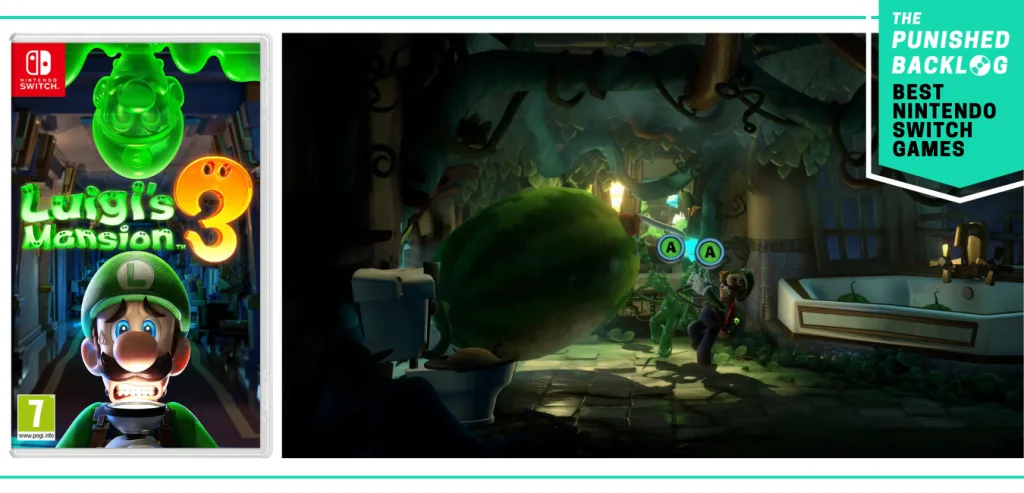
Luigi’s Mansion 3
One of the strongest selling points of the Switch’s first-party titles is that one could plausibly argue that the best entry (or at least one of the more notable ones) in nearly all of Nintendo’s biggest franchises was released first and foremost as a Switch game. I’m not interested in debating whether this is broadly true, but it absolutely applies to Luigi’s Mansion 3, arguably the best Nintendo-published Switch game that doesn’t have a jump button.
Now, it’s not especially difficult to make the case that Luigi’s Mansion 3 is the best in its series, as it’s only in competition with two other games. Still, LM3 is a fantastic adventure title, one with some of the best 3D Metroidvania tendencies out there and endless layers of charm. Much like previous entries in the series, you play as the greener Mario brother hunting ghosts in a scary locale with a tricked-out vacuum cleaner. This time, you’re trying to save Mario and friends in a haunted hotel, where each floor has its own bizarre and wonderful theme. (One floor has its own Egyptian pyramid with quicksand traps, while another has a pirate ship and dock.)
The cartoon horror is never actually that spooky, but creates a fascinating atmosphere of slow-building tension that’s always cut by moments of genuine humor. The main puzzle challenges are fairly straightforward, but the game does a great job of encouraging players to search beneath the surface for little secrets (often in the form of collectible gems and cash to buy item upgrades), which are EVERYWHERE. Even after you’ve collected more than enough money from searching through each nook and cranny, it’s consistently fun to tinker around each room just to see if something is there, especially if it’s another surprise ghost to fight.
Though I’ve neglected to extol the virtues of Luigi’s Mansion 3 as much as some other first-party Switch standouts, the game has stuck with me even all these years later. It’s pure Nintendo goodness: consistently engaging level design, myriad moments of total joy, tons of secrets to discover, a beautiful (yet SPOOKY) soundtrack, and a never-ending stream of charm emanating from a truly terrified Luigi.
– Written by Sam Martinelli
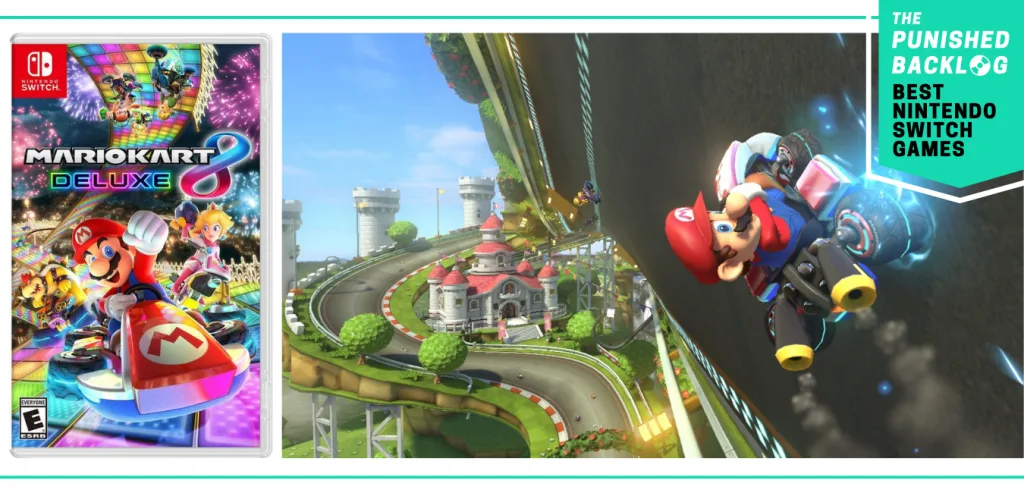
Mario Kart 8 Deluxe
If you had a Switch, there was zero chance you didn’t have Mario Kart 8 Deluxe. Few games in the last decade have become so synonymous with a party, and although this game is simply an expansion of its Wii U predecessor, it feels completely new.
But there is more than just the feeling that sitting down to play MK8D brings; every inch of this game feels so detailed that you can’t possibly see everything, even after years of playing. Each vehicle is custom-made by the player, with small tweaks that can completely change a race. There are seemingly endless playable characters here (welcome, Link!) that will satisfy every fan. And of course, the tracks themselves are stunning. Everyone has a personal favorite cup and track, and it’s hard to go wrong. From classics like the tranquil Moo Moo Meadows and chaotic Baby Park, to new tracks like the disco-inspired Electrodome and not one, not two, but THREE Rainbow Roads, MK8D has something for everyone.
Of course, I’d be remiss not to mention my personal favorite track: Mount Wario. I’m admittedly heavily biased (I’m a big skier), so this one falls right in my alley, but man. Everything about this course hits, from the top-to-bottom design, to the little details like a tree run and moguls, and of course, that banger of a soundtrack as you race to find out who’s king of the mountain. Mountain rules indeed!
It’s rare to see a game reach the universal heights of Mario Kart 8 Deluxe, as it had a mass appeal that transcended the console itself. And because of the Switch’s portability, it became one of the signature “play anywhere” games of the generation. The beauty of the game, and in turn the console, lay in this. You didn’t need to have a Switch to love it. You just had to know someone who did.
– Written by Mark Bowers
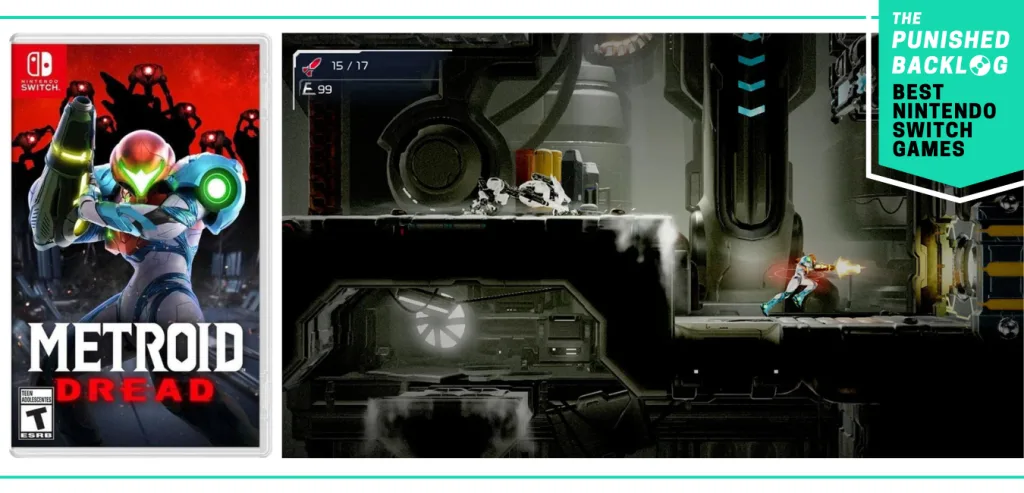
Metroid Dread
MercurySteam’s Metroid Dread isn’t the perfect sequel. (Just mention it within earshot of David, and he’ll lose his mind.) In fact, it might be the riskiest during Nintendo’s Switch era (or on this side of Metroid: Other M). Dread returned Samus Aran to the 2D action-adventure gameplay of Metroid Fusion. The game, also known as Metroid 5, has a fabled development history as well.
For the most part, though, Dread presents a pretty straightforward narrative that builds on the prior 2D games. Its guiding question becomes: What are the consequences of Samus having Metroid DNA, following the events of Fusion?
Developer MercurySteam further enhanced the gameplay they co-crafted in developing Metroid: Samus Returns for the 3DS. The result is a Metroidvania that isn’t the best or most memorable in the genre (look at Hollow Knight), but a celebration of Metroid’s influence on the genre. Dread becomes an archive: never neutral about Samus, Metroids, or the world they inhabit, but a series of familiar (and occasionally surprising) set pieces, tools, and upgrades that invite reminiscence.
Real talk as The Punished Backlog’s resident horror writer: Very few Switch games inspire fear or (sorry for this) dread. Luigi’s Mansion 3 is lovely, but I would call it as scary as Disney’s Haunted Mansion ride. Nintendo hasn’t given us anything quite like Eternal Darkness or Resident Evil 4 (which started life as a GameCube exclusive) in over a decade. I fear (again, apologies) that Metroid Dread’s E.M.M.I.s will be the closest we get for some time. The agile and mobile robots struck fear in my heart every time I encountered one. They introduced a terrifying element to Nintendo’s best science fiction franchise. That alone makes Metroid Dread a worthwhile Switch experience.
I hope that Metroid Prime 4: Beyond and an eventual Metroid 6 further embrace sci-fi horror while keeping everything that has made the franchise foundational. For now, Dread will more than do.
– Written by Clint Morrison, Jr.
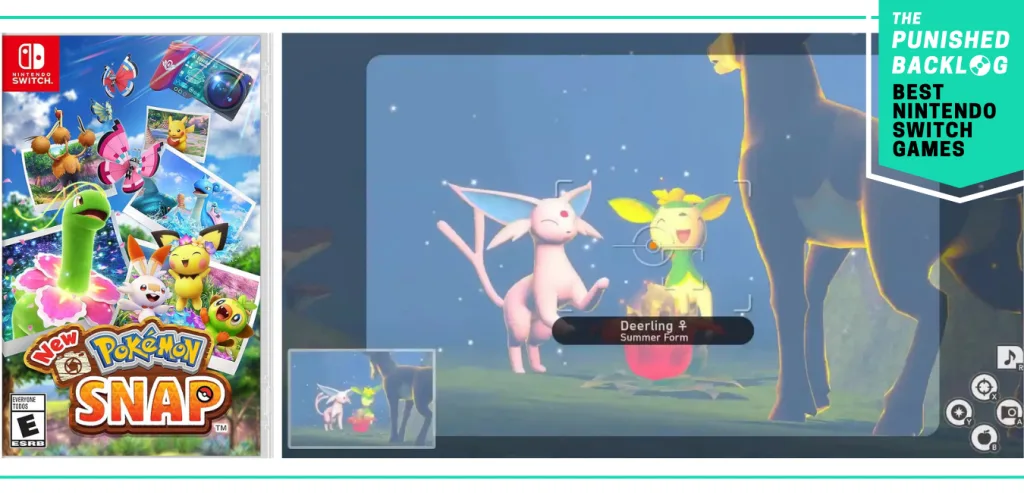
New Pokémon Snap
When a friend turned into a Pretty Girl Bully in fifth grade, I was saddened to lose our friendship, and I was really bummed to lose access to her Nintendo 64. I didn’t have a Nintendo console growing up. Sitting on her living room floor, I experienced classics like Super Smash Bros. for the first time. But there was no title I loved more than Pokémon Snap.
The international Pokémon craze was in full swing in the 1990s and early aughts. The franchise used ‘mon that had been captured in Pokéballs (which sometimes felt kind of icky) in battles. But in 1999, Nintendo and The Pokémon Company offered a new way to experience their beloved world — capture Pokémon on film, rather than in little orbital prisons. Here, Pokémon were able to freely go about their lives, and players were merely respectful witnesses.
The game was a hit. It was one of the first times that a Pokémon title appeared on a console (rather than a handheld like the Game Boy Color). It was technically impressive, too — Snap was the first time that Pokémon were rendered in real-time in 3D. Over the next 20 years, it would occasionally get ports or little remakes, but nothing in-depth until the 2021 release of New Pokémon Snap.
When I started New Pokémon Snap, I was instantly transported back to that stubby beige carpet in a little house in the middle of a desert. I remembered trading turns with my friend, passing the controller back and forth, marveling at a shot of that Charmander, exclaiming when we caught sight of a Gyarados in a waterfall, cooing over Eevees in a field. I loved the game so much that it made it into my top five video games of 2021.
New Pokémon Snap brings back all of the magic of the original title while adding more Pokémon, more levels, more music, more lore, and more interactivity. I beamed when I had the chance to help a Deerling find its mom with clever uses of my camera’s flash. When I threw an apple to an angry Scyther, it relaxed and cheered, throwing its knife-like arms in the air. I enjoyed bopping around my character’s campsite, playing with a Pichu.
New Pokémon Snap delivers a delightful, relaxing, family-friendly way to experience the Pokémon universe on the go or at home, exclusively on the Nintendo Switch — perfectly living up to and carrying on the original’s legacy.
– Written by Amanda Tien
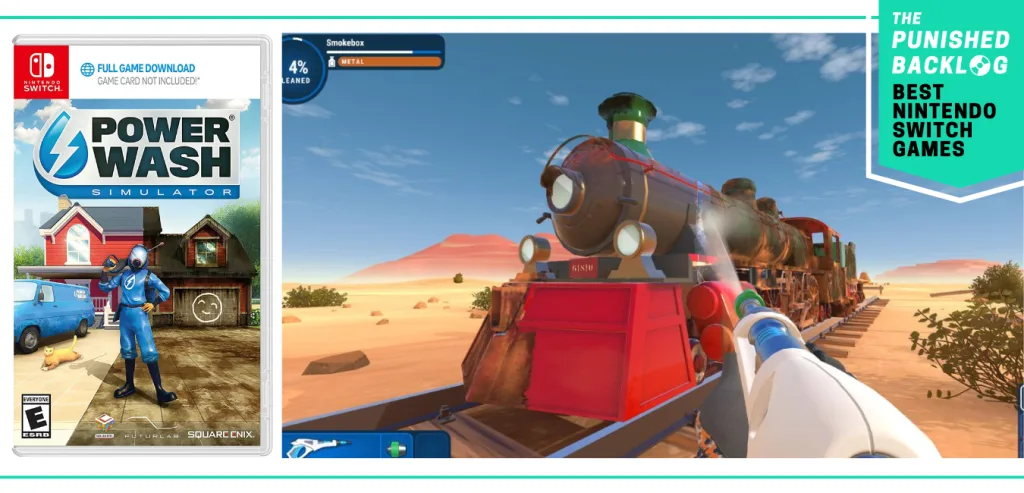
PowerWash Simulator
In PowerWash Simulator, you are a business owner performing power-washing jobs for cash. Each task you do involves cleaning anything from vehicles to houses to playgrounds. As you progress and earn more money, you can upgrade your equipment to make jobs easier. Even with better tools, jobs become harder, requiring an eagle eye to catch small specs of dirt. During your jobs, you also receive wacky messages from clientele who bring humor to what may sound like a dull game.
You don’t do much aside from cleaning, but the sounds are very ASMR-style, with players working to the tune of spraying water. As a result, PowerWash Simulator is the most relaxing game I know and is perfect for handheld gaming. When watching TV or listening to an audiobook, this is my favorite brain-off game on Switch. This beloved indie is a favorite with cozy gamers as its skill level is low. Just relax and spray some dirt!
PowerWash Simulator is a must-play on the Nintendo Switch. The base game costs $24.99, providing 75 hours or more of content. If you want more, there is DLC in the worlds of Shrek, SpongeBob, Tomb Raider, and much more. New DLC is added frequently, so if you’re looking for a low-stakes game to keep you busy for a long time, PowerWash Simulator may be for you.
– Written by Allison McDaniel
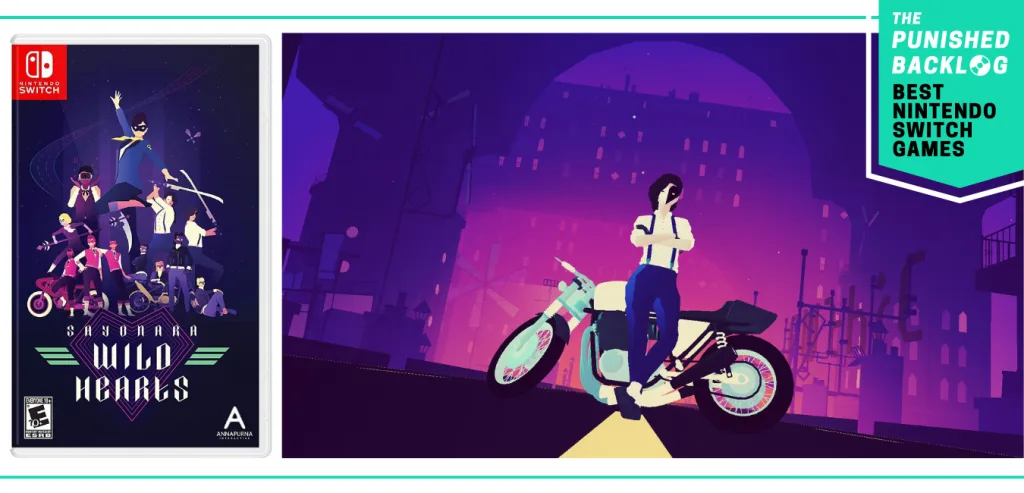
Sayonara Wild Hearts
Sayonara Wild Hearts is a game best experienced with headphones on, in a dark room, fully engrossed in the screen in front of you. The visual splendor of a pop album brought to life, fused with simple 3D runner gameplay, doesn’t need large screens and a sound system. Instead, it craves the intimacy of closeness, the personalization of focus. The story of heartbreak and healing and queerness wants to draw you in and make you feel the pain and triumph of the Fool. And what better way to do that than holding the screen in your very hands?
The Switch gave me many emotional experiences throughout its life. The lonely vistas of Breath of the Wild took my breath away. The triumphs of Hades kept me sane during lockdown. But Sayonara Wild Hearts knocked me on my butt. I cried during the ending, as the Fool accepted herself and her hurt pieces. I cheered as she found herself again and accepted self-love as something she deserved to feel. For such a simple game, I found myself engrossed in the levels and wanting to get “perfects” on each stage. Beyond the emotional story, the game is fun! Sometimes, simplicity is best!
And that’s to say nothing of Daniel Olsén’s soundtrack. It is perfect pink pop, with sweeping ballads and club bangers. As a big fan of Carly Rae Jepsen, the Sayonara Wild Hearts album feels like a lost project. I still use it as my kitchen soundtrack to this day. “Wild Hearts Never Die” in particular will always get me moving.
– Written by Gary Wilson
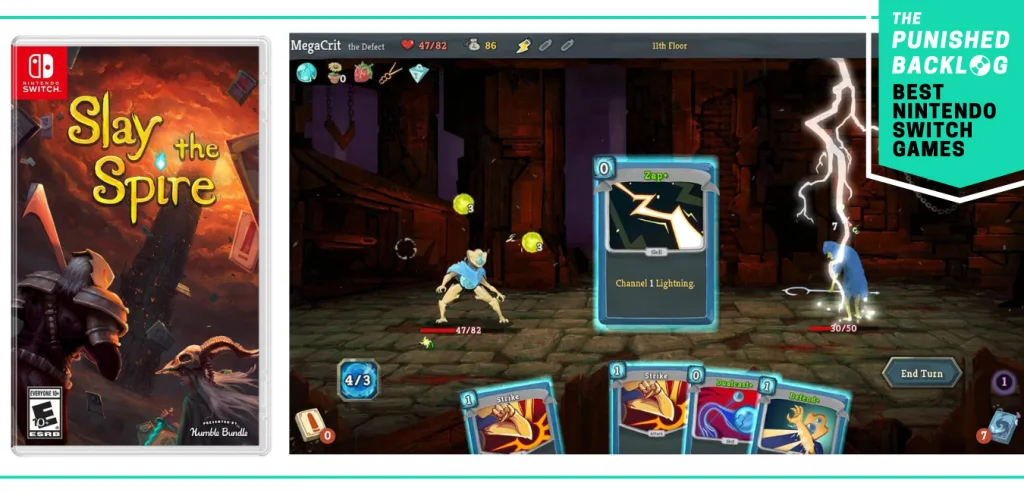
Slay the Spire
Early in the life of the Nintendo Switch, the system gained a reputation as an indie machine. The portable format and low power compared to its contemporaries led to a focus on smaller experiences, and less on major third-party titles. Slowly, indies populated the Nintendo eShop, and sales ran wild. During one of those sales, I grabbed Slay the Spire on a whim. I had heard strong things and enjoyed a good roguelike game. $10 seemed like a perfect “try it out” price point for a deckbuilder. And then my life changed.
As of writing, I have over 1,500 hours in Slay the Spire, the majority on Switch. Every night for years before bed, I would do a run as a wind-down ritual. It became my grounding activity as I spent weeks on the road and in hotel rooms for my old job. It brought normalcy and routine to a whirlwind. Being able to just pop the Switch out of my bag while waiting outside a high school for two hours until a college fair began, and focus entirely on Corpse Explosion Silent runs, settled my brain in ways even hard drugs can’t do.
Slay the Spire is the perfect Nintendo Switch game: quick to play but with a ton of depth, without the requirements of strong hardware performance. A game that is perfectly portable, and a game that works best when you can also put it down. Get frustrated on a run? Put the system down and walk away. You can resume the game whenever you get back. Plus, Slay the Spire is a great game to give to other folks and go, “Hey, try this out.” Being able to physically hand over the Switch and let them run wild sold copies to my friends for years.
In the end, Slay the Spire brought me back to childhood. Late at night, curled under covers with my Game Boy Color, shining a flashlight near the screen so I can see, fully engrossed in the tiny screen. Handhelds have a special place in my heart, and Slay the Spire maximizes what makes them great.
– Written by Gary Wilson

Stardew Valley
Ah, Stardew Valley — the quintessential farming sim. What list of favorite Nintendo Switch games would be complete without Stardew Valley?
In fact, my Switch saved my Stardew Valley experience. I started my first farm in 2020 on PC. I diligently grew my mayo business, conquered Abigail’s heart, saved the community center, plumbed the mines, downloaded a ton of mods to supercharge my gameplay, and then hit a wall, bored with the same automation that helped me achieve these goals.
But after redownloading Stardew Valley onto my Switch, my love for the farming sim was revived with streamlined controls and a return to casual play. Instead of grinding for achievements, playing on a handheld device made me take it slow. I started up my new farm, wandered into town, and realized… oh hey, I missed these guys! I quickly reconnected with what makes the game so iconic: its charming characters, easygoing gameplay, expansive world, and options for endless customization.
Stardew Valley’s customization is what makes it appeal to a wide variety of players, no matter the goal. You can aim for perfection, romance every possible NPC, or set up a co-op farm with friends. Its recent updates have continued to build on its deep lore and expand its idyllic world through new festival events, NPC dialogue, outfits, items, renovations for your house… the list goes on, adding hundreds of hours of additional gameplay for loyal fans. That’s why, for many gamers, it remains a home away from home, ready for you when you’re ready for it.
– Written by Lauryl Fischer
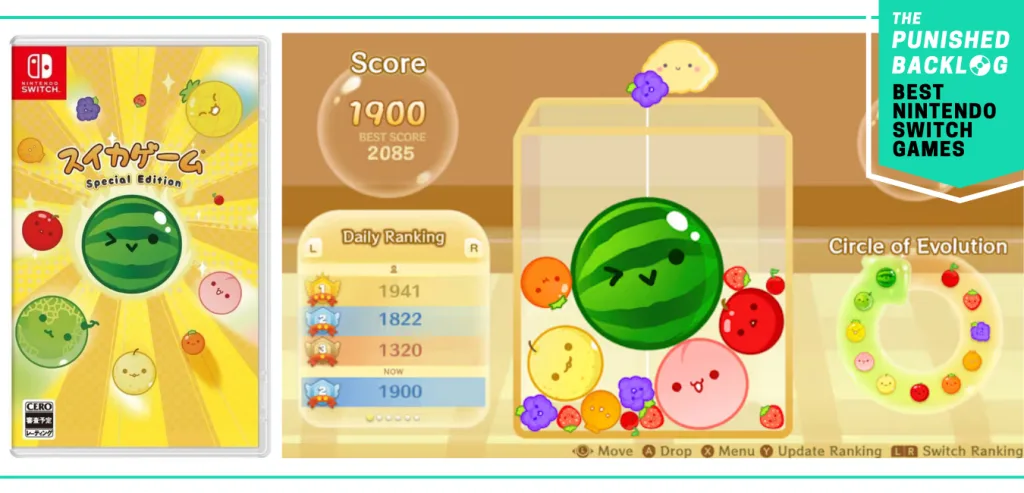
Suika Game
Suika Game (“suika,” notably, being the Japanese word for watermelon) surged in popularity from late 2023 to early 2024, riding on the backs of viral Twitch streams. But while others flirted with the game, my love affair with Suika runs deep. It’s a simple puzzle game — you combine fruits of the same type to create bigger fruits, eventually creating a watermelon. If your fruit pile infringes the boundaries of the box, you lose. But combine two watermelons, and you crown yourself a Suika God.
Unfortunately, despite playing on and off for over a year, I have yet to crown myself a Suika God.
Still, Suika is my go-to puzzle game anyway, combining deceptively tricky physics with a soothing game atmosphere. Its gentle pastel-color backgrounds (customizable via adorable summer skins!), expressive kawaii-style fruit design, and lively music create a meditative landscape that rewards patience rather than cleverness. Unlike many popular puzzle games like Tetris, you can take as long as you need to drop your fruit. In fact, sometimes the best strategy is simply to let your fruit settle and combine on its own.
Personally, I prefer to play Suika on my own for this very reason, curling up in bed with my Switch and winding down for the day with a few rounds. Even when the fruit bounces and rolls unpredictably, thus throwing off my strategy, this same unpredictability has also brought my games back from the brink multiple times. If I’ve lined up enough fruit, one perfect combination is all it takes to cause a satisfying chain reaction — making me feel like a Suika god, even if I have yet to earn the title.
– Written by Lauryl Fischer

Super Mario Odyssey
Breath of the Wild and Tears of the Kingdom may be the de facto leaders of the “best Switch games” cabal, but Super Mario Odyssey isn’t far down the pecking order. The first new 3D Mario sandbox since 2002’s Super Mario Sunshine, Odyssey deviated from more recent, more linear games like Galaxy 2 and 3D World in favor of classic collectathon goodness.
When Super Mario Odyssey released in late 2017, I tore through it in a matter of days. Even now, eight years later, I remember the fever dream that experience was. Going to sleep, thinking of moons I’d yet to discover. Waking up, groggy but ready for another eight-hour marathon. I immersed myself in the many worlds of Mario and Cappy’s globe-trotting journey, to the point where everything in my real life became a blur. (And I lived in France back then. Imagine how good a game must be to tune out baguettes and croissants!)
Sure, Super Mario Odyssey might not have revolutionized the genre in the same way Breath of the Wild transformed open-world games. But I’d argue it didn’t need to. What Nintendo EPD gave us, instead, was a superb platformer with airtight controls, shockingly deep mechanics, and scores of wonderfully realized moments. My one lament is the fact that we haven’t seen a sequel… yet.
– Written by David Silbert
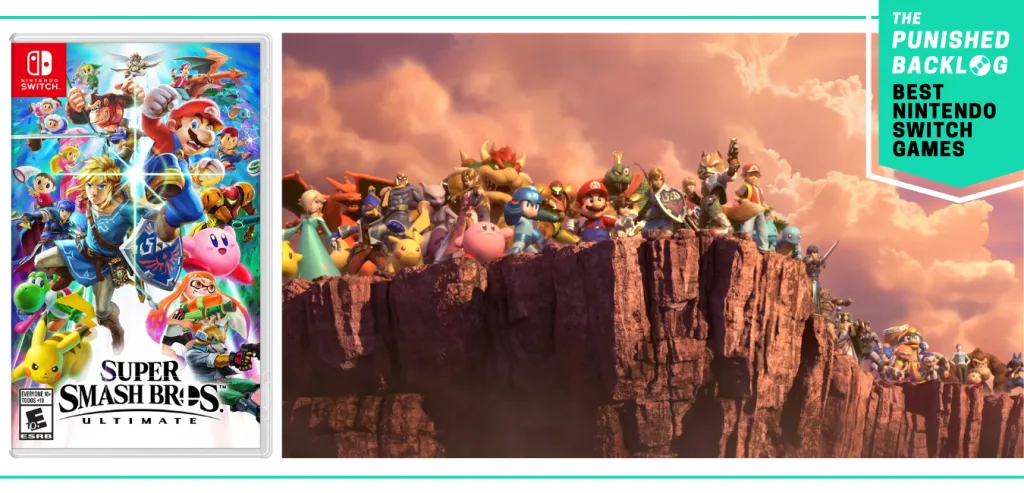
Super Smash Bros. Ultimate
It’s been seven years since Super Smash Bros. Ultimate graced our Switch screens, yet it certainly doesn’t feel that long. Despite launching in 2018, the game has stayed relevant thanks to a steady feed of balance patches (at least through 2021), meta-shaking DLC fighters, and local and big-circuit tournaments.
A large part of Ultimate’s longevity stems from its absolutely stacked roster. 80+ playable characters, including every single character from past games. Representation from massive third-party IPs such as Minecraft and Persona. Big baddies like Sephiroth, Ridley, and a retooled Ganondorf (“doriyah!”). And, of course, Sora.
You can make the argument that the roster is excessive, and that development could have been better served refining other aspects of the experience. The single-player campaign, World of Life, pales in comparison to Brawl’s ambitious Subspace Emissary. The stage builder still largely sucks, and the online suite — though improved over past entries — isn’t exactly state of the art.
But none of that matters. Not when the action is so fun, the roster so deep, the mayhem so enticing. I made countless memories duking it out with friends and family in Ultimate, and while a follow-up for Switch 2 is inevitable, I will always look back fondly on Masahiro Sakurai’s magnum opus.
– Written by David Silbert
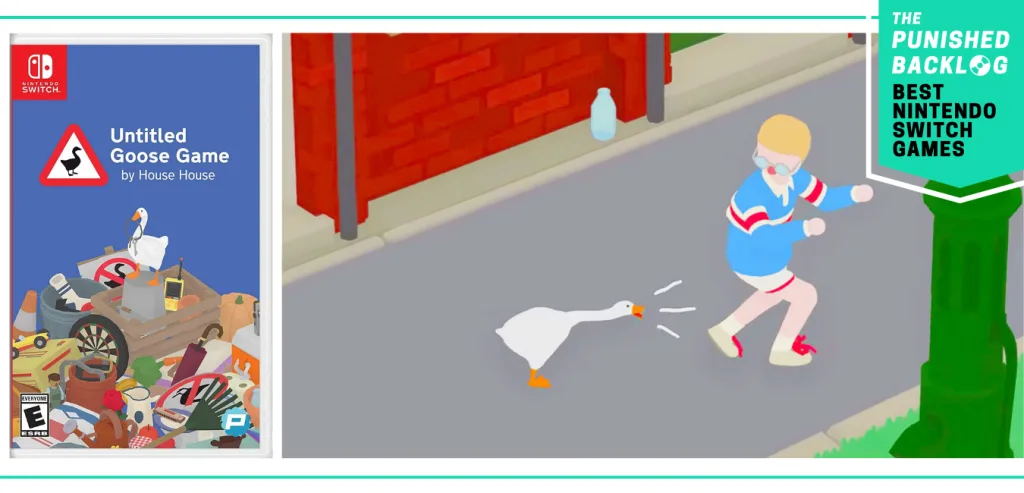
Untitled Goose Game
There’s no question the Nintendo Switch is my favorite console of all time. I could spend hours praising games from Hollow Knight to Hades, huge titles like Tears of the Kingdom to indie hits like Cult of the Lamb, which I adore. But, if I’m ever asked for recommendations, there’s only one game I always pick, and that’s Untitled Goose Game. Regardless of someone’s genre preferences, gaming experience, or level of interest in geese, I think Untitled Goose Game is the quintessential, must-play Switch title.
It would be easier to list problems with the game than reasons why it is perfect, because there’s only one: It is too short. At only four hours or so, UGG left me wanting so much more. More waddling around aimlessly, more trapping small children in phone booths, more rakes in lakes, and obviously more honking! In some ways, it’s a game better left unexplained before taking the leap of faith. Luckily, there’s not much to explain. You play as a goose (you can even play as geese in couch co-op mode) who terrorizes a quaint English village by completing increasingly difficult yet completely ordinary tasks like setting up a picnic or scoring a goal in an unguarded soccer net. You can do all the things a goose can do, like flap your wings, crane your neck, and, of course, honk at everyone you encounter.
The joy here is truly in the simplicity and creativity on display. The art style isn’t full of impressive detail, but it is colorful and pleasant and conveys a calmness to the world just waiting to be ruined. The music is used sparingly and consists of light piano that knows exactly when to accompany the gameplay to create a beautiful harmony. And though the player is given very specific actions that need to be completed, there is practically no indication of how to do them, leading to endless possibilities and, for me, nonstop laughter as my imagination ran wild. Sometimes it’s just the little things in life that bring the most enjoyment, and this cute, bite-sized surprise hit is a simple pleasure I go back to time after time. I would recommend it to literally anyone and everyone! HONK!
– Written by Zack Gulinello
Best Switch Games: Honorable Mentions
These are other games we love on the Nintendo Switch that didn’t quite make the cut for our featured list. However, we still love them, and we encourage you to check them out.
- A Little To the Left – a relaxing puzzle game (recommended by Amanda)
- Brotato – an arena shooter roguelike where you play as a weapon-yielding potato who is fighting aliens (recommended by Allison)
- Citizen Sleeper 1 & 2 – super well-written visual novels with clever dice mechanics set in a cyberpunk space station (recommended by Amanda)
- Coffee Talk 1 & 2 – a cozy barista simulator in a fantastical Seattle where you can befriend werewolves and help bickering elf couples with lattes (recommended by Amanda)
- Cosmic Wheel Sisterhood – a witchy visual novel where you make your own tarot cards and decide the fate of your coven (recommended by Amanda)
- Cult of the Lamb – Half Hades, half Animal Crossing, there’s never been a mashup less expected yet so flawlessly executed (recommended by Zack)
- The Legend of Zelda: Echoes of Wisdom – play as Zelda in a delightful puzzle-action adventure where she can clone random stuff (recommended by Ben Rashkovich)
- Great Ace Attorney Chronicles – a steampunk mystery with a Japanese lawyer solving crimes in the UK with Sherlock Holmes (recommended by Amanda)
- Good Job! – couch co-op perfection in the form of office workers causing chaos in their 9 to 5 job (recommended by Zack)
- Hades – the 2020 indie roguelike super-hit in which you fight your way out of hell; plays great on Switch (recommended by Amanda)
- The Jackbox Party Pack Series – a portable vehicle for the best party games imaginable (recommended by Gary)
- Mario + Rabbids: Kingdom Battle – a turn-based strategy game where you play as characters from both the Mario and Raving Rabbids universes (recommended by Allison)
- Mario + Rabbids: Sparks of Hope – a sequel to Kingdom Battle with an updated combat system and more side content (recommended by Sam)
- Metal Gear Solid Collection: Volume 1 – the classic stealth series is perfect for a long weekend (recommended by Clint)
- Overcooked 1 & 2 – two of the finest couch co-op games ever, fully realized on Nintendo Switch; perfect to play with a partner or parent (recommended by David)
- Pokémon Legends: Arceus – a fresh take on the Pokémon formula set in this open-world, research-inspired adventure (recommended by Amanda)
- Sea of Stars – a turn-based RPG that harks back to the golden era of games like Chrono Trigger and Final Fantasy VI with some timing-based gameplay twists (recommended by Sam)
- Shovel Knight: Treasure Trove – a collection of excellent indie action platformers (recommended by Sam)
- Smushi Come Home – a delightful, bite-sized platformer that melds the serenity of Breath of the Wild with the warmth of your favorite cozy game (recommended by David)
- Snipperclips – high-key, this was actually the best Switch launch title (recommended by Kei Isobe)
- Super Mario Bros. Wonder – a reinvention of 2D Mario with a glorious new art style, tons of new power-ups and abilities, and plenty of zany level design (recommended by Sam)
- Super Mario 3D World + Bowser’s Fury – the best and most forgotten 3D Mario gets an open-world expansion experiment to great effect (recommended by Gary)
- Tetris 99 – a Tetris battle royale; no more words required (recommended by Sam)
- Thank Goodness You’re Here – a comedy slapformer where you’re a little guy performing tasks for people in your British community (recommended by Allison)
More “Best Games” Features
Enjoyed our best Nintendo Switch games feature? We have many more lists where that came from.
For more platform-specific lists, check out our lists of the best PlayStation 2 games ever (it’s a long one!), the best Nintendo DS games, and — last but certainly not least — the best Super Nintendo games.
If you’re in the mood for a specific genre, don’t miss our list of the best Metroidvania games, as well as our list of the best roguelike games ever made. And, of course, we have a list of the best cozy video games, too.
What Are Your Favorite Nintendo Switch Games?
What’d we get right? What games did we miss? Let us know in the comments below!

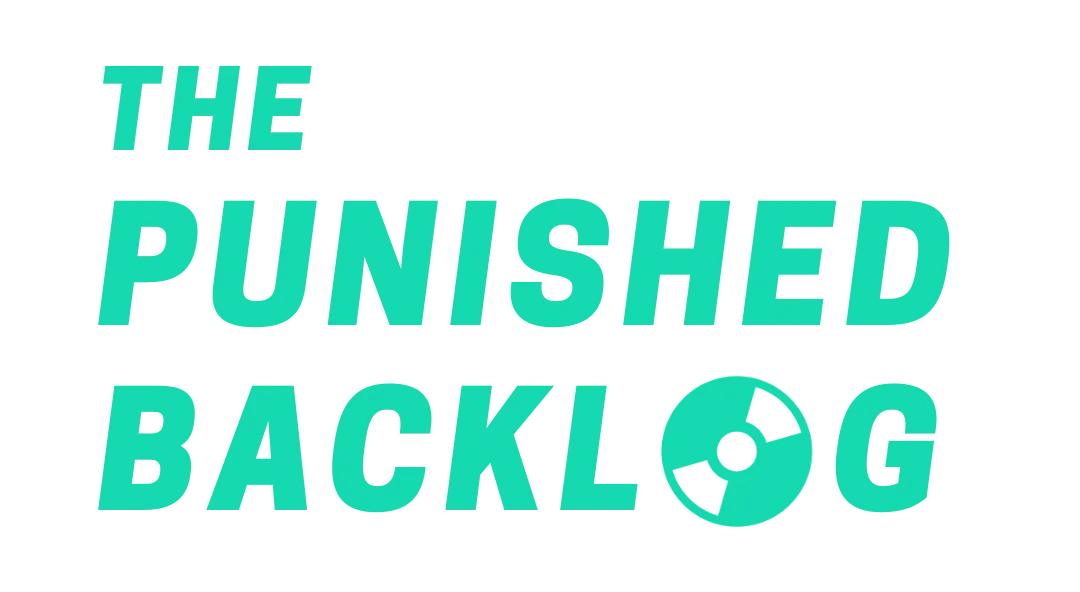







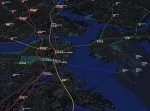






























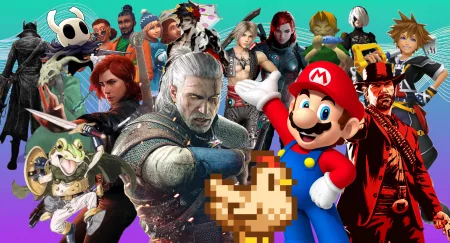

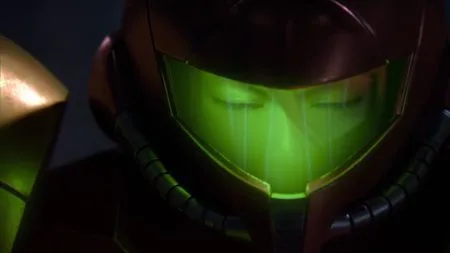
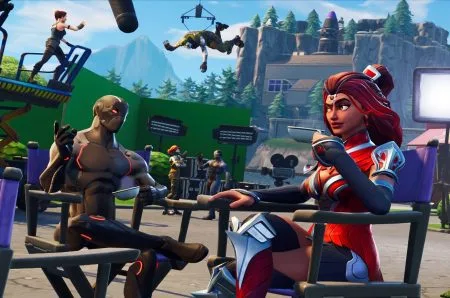
The Messenger *drops mic
OMG you guys have a very bad taste when it comes to gaming.
I personally feel there should be more switch originals, partly cause most of these would be better(and cheaper) with a steam acount